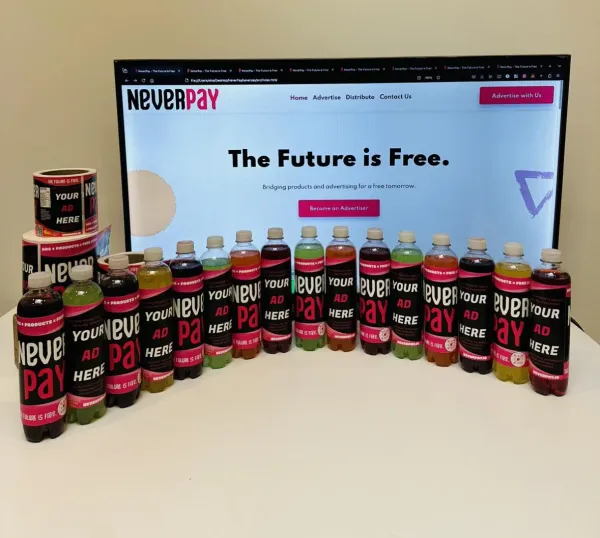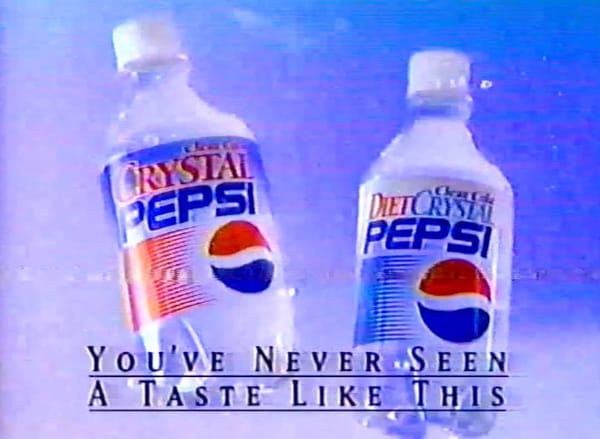At first glance, NeverPay’s homepage is a designer's dream—a sleek interface, bold promises, and a mission to disrupt traditional consumer models.
On the surface, it feels like an entirely new concept that goes against traditional methods of marketing and distribution.
The concept of receiving high-quality products for free, subsidised by ads, sounds awesome, right?
But dig a little deeper and the entire business model feels like it was crafted more to win awards for innovation than to actually work in the real world.
Here's why.
The Disconnect Between Idea and Execution
The crux of the problem with NeverPay lies in its fundamental disconnect between an attractive concept and the messy realities of execution.
Let's start with the basics: If the product is subpar, it doesn't matter how innovative your business model is—people won't use it.
If I'm a consumer looking for a healthy, tasty juice, I might appreciate that it's free, but what's actually inside the bottle? Information hierarchy is tricky, especially when people are thirsty and only have 5 seconds to make a choice.
If the front is promoting other businesses or products, it might not align with what I’m actually looking for.
And if the product is good, why would companies bother with a convoluted ad-subsidised distribution when they could sell it through traditional channels and make a profit?
Think about it.
To succeed, NeverPay needs to continuously attract advertisers willing to fund the cost of these products. But what happens when the novelty wears off?
If brands aren't seeing the promised returns or engagement, they’ll quickly move on to more reliable methods of reaching consumers.
Regulatory Nightmares Await
Let's say NeverPay miraculously overcomes the hurdle of product quality and brand engagement.
The next stumbling block is the labyrinth of regulatory approvals. In many regions, even the most minor product alteration—like a change in packaging or labelling—can trigger a cascade of legal requirements.
If NeverPay is frequently updating labels or introducing new products, they would need to navigate these regulatory hurdles continuously.

This isn't just an inconvenience; it’s a logistical and financial nightmare.
To put it bluntly, companies would rather risk their content in the murkiest corners of the internet than deal with relentless oversight from regulatory bodies like the FDA in the US.
The sheer complexity and expense of ensuring compliance on a global scale could cripple NeverPay before it even gets off the ground.
A History of Failure in the Free Products Space
NeverPay’s model isn’t just flawed—it’s also unoriginal.
Similar concepts have surfaced in the past, each with its own clever spin on the free product plus ad revenue model. FreeWater, for example, promised similar disruption, yet despite $250,000 in investment, it only employs four full-time staff on LinkedIn.

The idea might be cool, but the numbers simply don’t add up.
History is littered with the wreckage of companies like Free Aqua, Just Free Water, FreePaani, and Ad Water. None of them were genuinely successful.
These ventures often ended up as cautionary tales, with small advertisers and excited early adopters left holding the bag when the hype fizzled out.
The True Cost of "Free"
The appeal of free is undeniable, but in the case of NeverPay, the true costs might outweigh the benefits.
The economics don’t make sense unless the company is banking on two less-than-ideal scenarios: (1) convincing small advertisers who don't know any better and will eventually churn, or (2) raising funds by riding the wave of gullible social media followers who are easily dazzled by a slick pitch.
For all its innovation, NeverPay seems poised to repeat the mistakes of its predecessors, prioritizing buzz and awards over a sustainable and effective business model.
In the end, NeverPay's design might win accolades in marketing circles, but as a practical business venture, it’s likely to be another footnote in the long list of failed "revolutionary" ideas.
NeverPay’s business model appears to be an example of innovation for innovation's sake—eye-catching but ultimately impractical.
It’s one thing to create a buzzworthy product, but quite another to build something that stands the test of time.
Until NeverPay addresses the significant logistical, regulatory, and economic hurdles in its path, it’s hard to see it as anything more than a good idea that won’t work in the real world.













